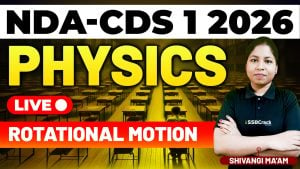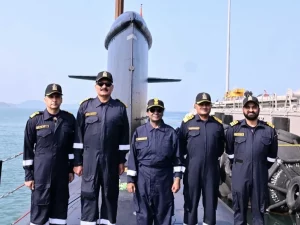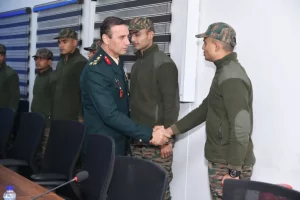Aspiring candidates for the Combined Defence Services (CDS) and National Defence Academy (NDA) examinations understand the significance of comprehensive knowledge about India’s physical features. Beyond the academic scope, understanding these features is pivotal for candidates aiming to serve in the Indian armed forces. India’s diverse terrain, ranging from mountains to plains, rivers to coastlines, presents unique challenges and opportunities for defense strategists and military operations. Here’s why a deep understanding of India’s physical geography is essential for CDS and NDA aspirants:
1. Strategic Defense Planning: India’s rivers have historically played a pivotal role in defense planning. Understanding their routes, tributaries, and connection points is vital for strategizing military movements, especially during times of conflict. Rivers like the Ganges, Brahmaputra, and Indus have been strategic assets throughout history, shaping battlefronts and influencing territorial control.
2. Tactical Significance: In military operations, rivers can serve as natural barriers or conduits for troop movements. Aspirants need to comprehend how to leverage these water bodies strategically. Familiarity with river crossings, bridge locations, and potential bottlenecks can be decisive in planning and executing military campaigns effectively.
3. Ecological Awareness: Beyond their military significance, Indian river systems are integral to the nation’s ecological balance. Aspirants must recognize the importance of preserving these water bodies and mitigating environmental threats such as pollution and habitat degradation. Understanding the interplay between human activities and river ecosystems is crucial for future military leaders tasked with protecting national resources.
4. Economic Implications: India’s rivers aren’t just arteries of defense but also lifelines of commerce. Aspirants must grasp the economic importance of inland waterways for transportation, irrigation, and hydroelectric power generation. Awareness of the socio-economic dynamics surrounding river systems equips future leaders to address infrastructure challenges and harness their potential for national development.
5. Disaster Management: Indian river systems are prone to natural disasters such as floods and droughts, which can have far-reaching implications for national security and public welfare. Aspirants should understand the role of disaster management agencies in mitigating these risks and coordinating relief efforts during crises. A comprehensive understanding of river dynamics and watershed management is essential for effective disaster response and recovery operations.
6. Geopolitical Considerations: Many of India’s major rivers originate from neighboring countries, highlighting the geopolitical dimensions of water resource management. Aspirants need to be cognizant of transboundary river disputes and diplomatic negotiations surrounding shared river basins. Competence in navigating geopolitical complexities ensures that future military leaders can safeguard India’s interests while fostering regional cooperation.
7. Technological Advancements: In the contemporary era, technology plays a crucial role in harnessing the potential of river systems. Aspirants should stay abreast of innovations in river monitoring, flood forecasting, and water management techniques. Familiarity with cutting-edge technologies empowers military leaders to leverage data-driven insights for strategic decision-making and disaster resilience.
In conclusion, the significance of Indian river systems for NDA/CDS aspirants extends far beyond geographical knowledge. It encompasses strategic, ecological, economic, and geopolitical dimensions that are integral to national security and sustainable development. By recognizing the multifaceted importance of rivers, aspirants can cultivate a holistic understanding of India’s strategic landscape and prepare themselves to lead with competence and foresight in the armed forces.



















